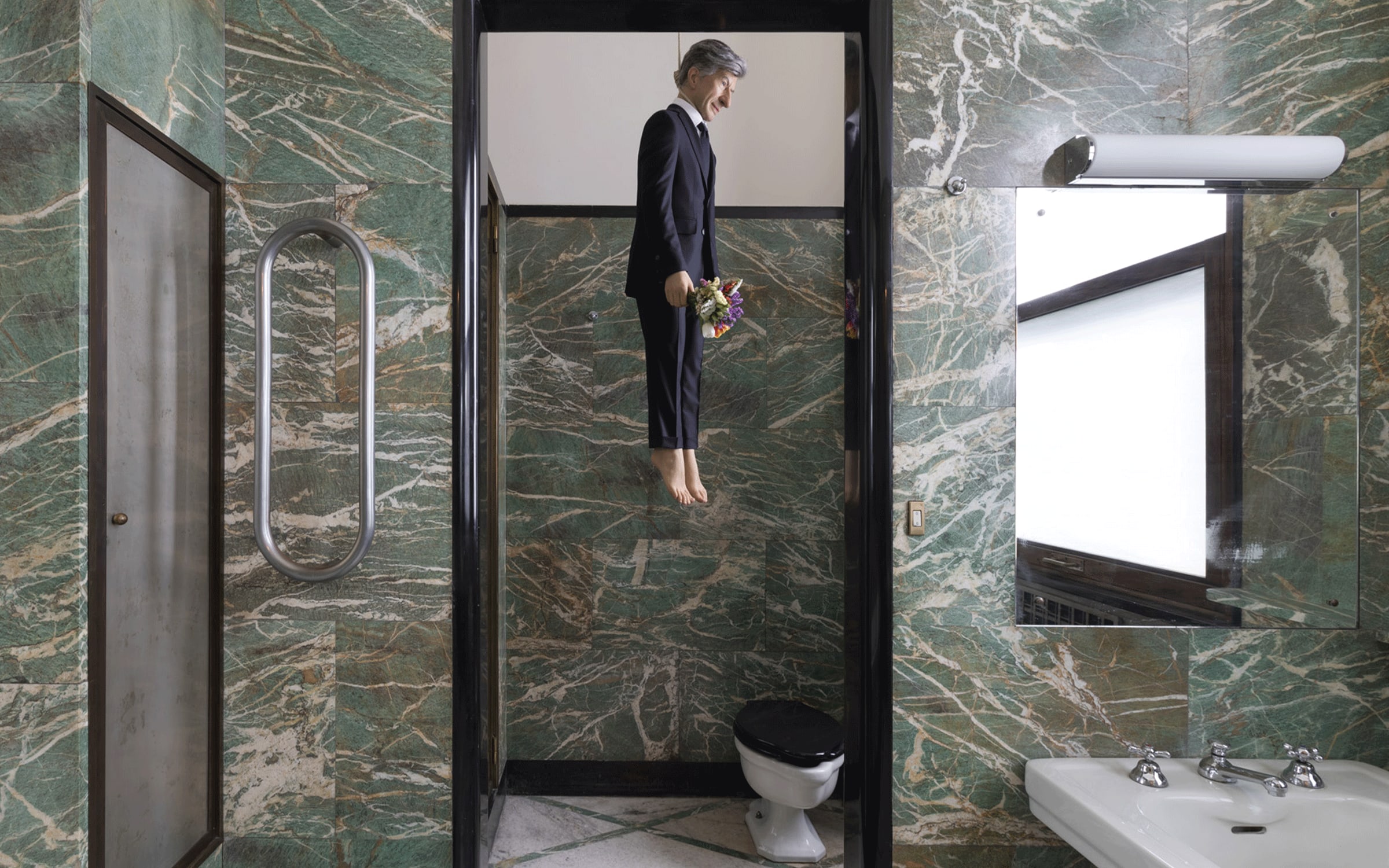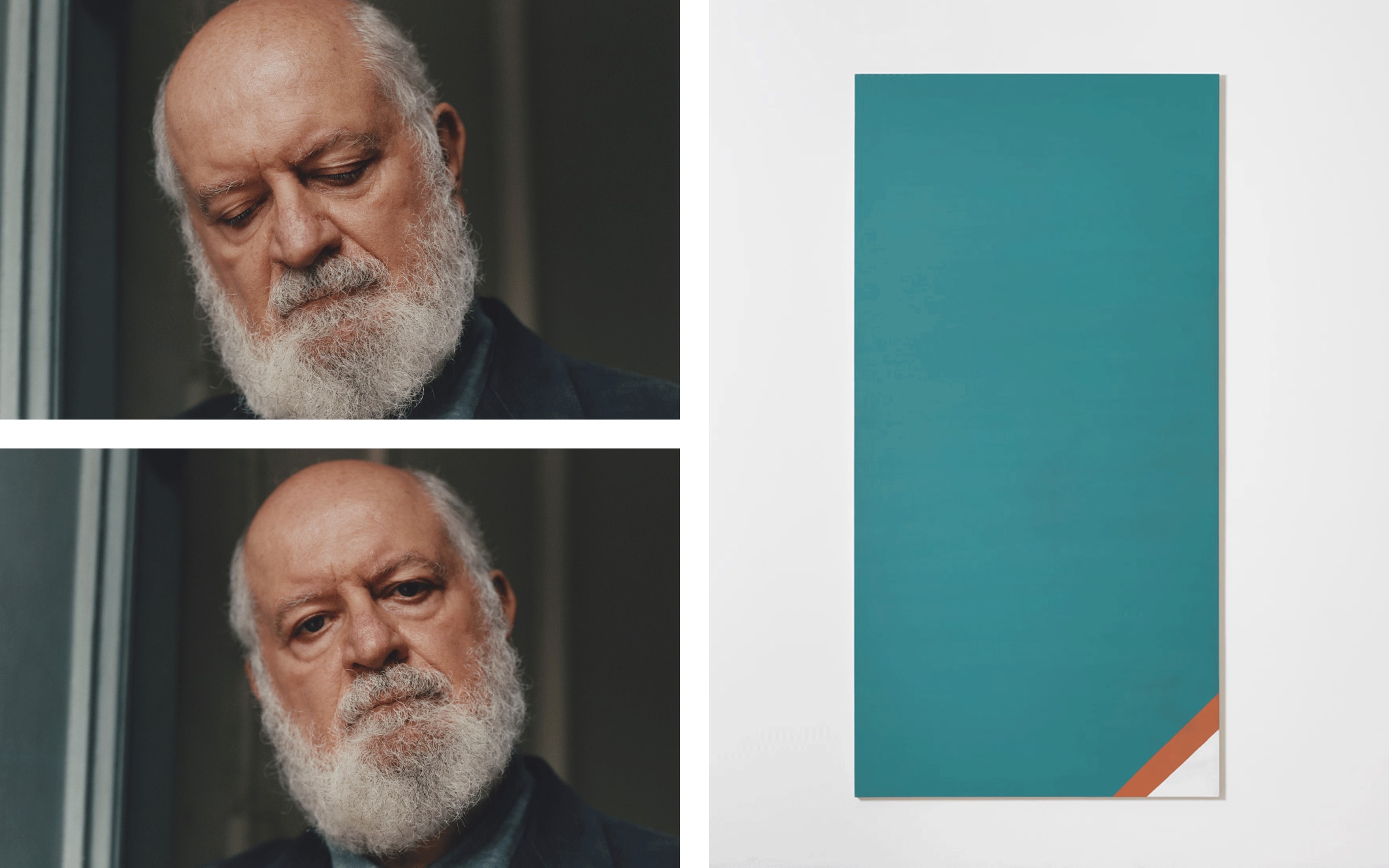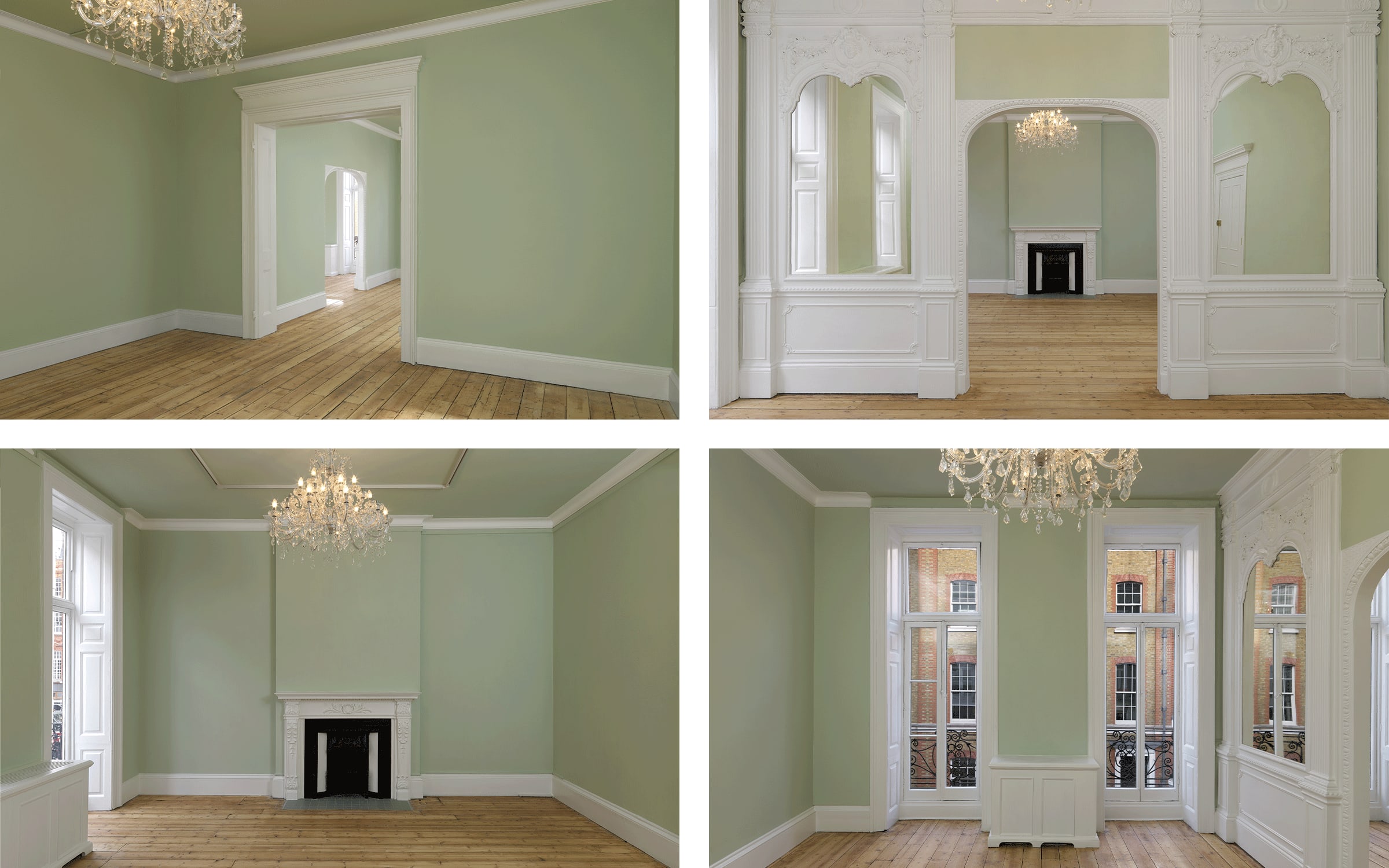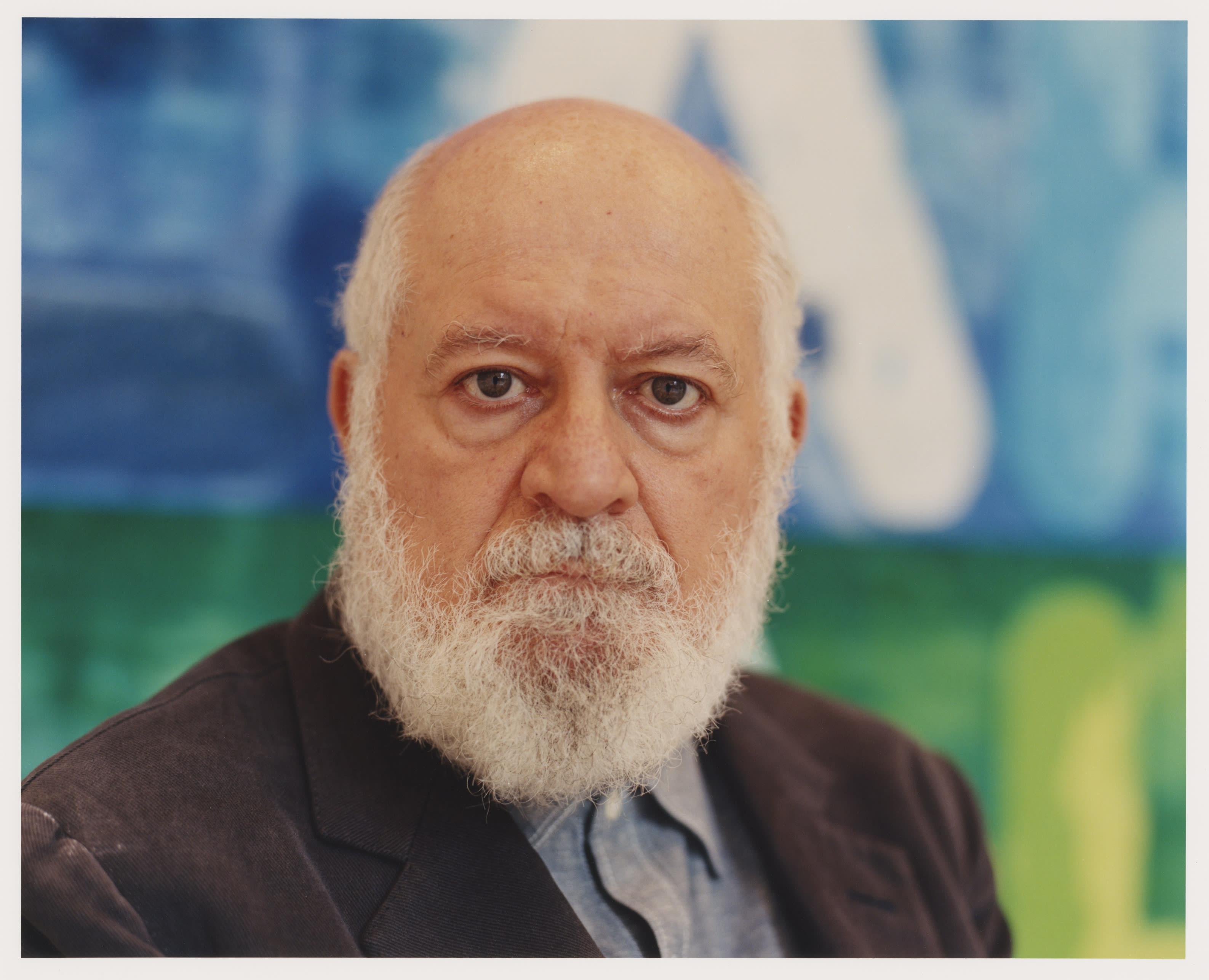While he is now established in Milan, London, Hong Kong, Paris, and Beijing, in his youth, the gallerist Massimo De Carlo promised himself an entirely different future. ‘When I started working in the late 1970s, I was only interested in music and cinema,’ he recalls, ‘art was the last thing on my mind.’ At the time, he was a concert organizer ‘for a non-profit organization connected to the University of Padua, the city where I grew up.’ His first discovery in the art world was at the Centre Pompidou, Paris, which he visited upon its opening in 1977. ‘Let’s not exaggerate, it was not a revelation, but I was definitely intrigued. My curiosity was piqued.’ Music led him to New York the following year. ‘I saw [Pablo Picasso’s] Guernica at MoMA before it returned to Spain. I was very impressed and came back to Europe with extremely vivid images in my mind.’ Salvador Dalí, Gustav Klimt, and Francis Bacon were his favorite painters at the time.
He then began a ‘small collection in 1982: a first direct involvement in art, which was undoubtedly decisive. Of course, as a collector, I made small mistakes – small in terms of money, big in terms of names. But I still have the first piece I ever bought: a black and white embroidery by Alighiero Boetti.’ The legendary artist still occupies a preeminent place in his collection. When a gallerist friend in Milan needed a helping hand in the early 1980s, De Carlo became his assistant, ‘and I chose to put my passion for music aside.’ In 1984, he visited the Mario Merz exhibition at the Palazzo Congressi ed Esposizioni in the Republic of San Marino. ‘That was where the real epiphany happened. I saw, just beside his igloos, a Mercedes! That exhibition changed my perception of art: I thought it was just painting and the academicism of museums. But a car considered as a work of art? It was the equivalent in art of what I love in music.’

Such was the guiding principle when he opened his first gallery in Milan, in 1987. Olivier Mosset was the first to show in this new space. ‘I adopted one of his maxims as my own, “a painting is done when it has been sold to a collector.” But I still have one of his paintings in my collection of unsold works,” he laughs. Along with their mutual friend John Armleder, they discussed John Cage, Fluxus, and Minimalist music. And in championing visual artists like Felix Gonzalez-Torres, Cady Noland, General Idea, and Boetti, he endeavored to sustain this particularly experimental spirit. ‘Let’s just say that I followed this path for 15 years, until I understood that being a gallerist is a bit more complex. At the end of the 1980s, arte povera was what remained of the fantastic freedom that prevailed in Italy in the 1970s, which had enabled so many experiments in music and theater. That movement was on its last legs.’
All the same, De Carlo managed to discover contemporary will-o’-the-wisps such as Maurizio Cattelan, who he continues to champion to this day. ‘As chance would have it, he comes from Padua, like me. Every now and then, he would come to see the concerts I organized – and always finagled a way in without paying!’ In 1992, he offered Cattelan an exhibition at his gallery. ‘Thirty years of what I would call a friendship – with any number of interludes,’ he recounts ironically. ‘Artists are the heroes, that much is clear: they like you to agree with them.’ We can read between the lines that their relationship has not always been easy, but De Carlo seems not to resent the artist for having taped him to a wall for two hours during a legendary exhibition in 1999. In the early 2000s, De Carlo had to face the facts: ‘Perhaps unfortunately, being a gallerist can also mean running a business.’ And so, he broadened his horizons – without planning a strategy, but by way of slight shifts: ‘by choosing artists who send signals into the future from obscurity,’ such as the painter Yan Pei-Ming. Now more than ever, he sees his role as gallerist as ‘a seismograph of the present.’


In 2008, De Carlo was among the first gallerists from the continent to cross the English Channel when he opened his space in London. In 2016, he headed to Hong Kong, where success awaited the member of the Art Basel Hong Kong selection committee, ‘namely for artists like Wang Yuyang, Lu Song, and Lee Kit.’ Just after moving his Hong Kong gallery to the city’s historic Tai Kwun – Centre for Heritage and Arts this fall, he also opened a space in Beijing. This newest gallery will show artists who are less visible in Asia, alongside a few Chinese artists, ‘to try to understand how collectors operate in this country. They remain very enigmatic – capable of holding incredible surprises. Every year, their curiosity is borne out, as is their delight to take part in the international market.’
And what of Paris? He acknowledges that ‘it is probably the most interesting city in Europe right now, both in terms of institutions and business. The city has regained its proud stature.’ A serendipitous situation, since he opened there in February 2021. Pièce Unique is based on the space created by Lucio Amelio on Rue Jacques Callot. ‘We are so proud to have been able to take up this brand! Amelio was probably the best gallerist in Europe.’ He only once met ‘this old art baron. He greeted me with a simple, “Ah, it’s you, Massimo!”’ A laconic dubbing, but a dubbing nonetheless. Now teleported to a bare stone space rehabilitated by Kengo Kuma on the Rue de Turenne, Pièce Unique offers a contemporary revisitation of the original concept: one artist, one space, one work. ‘Last year, we changed the installation 26 times. This year, it’s 54! The principle is really interesting. To be confronted with an artwork is one of the most enigmatic moments a human being can experience. Standing before an inanimate object, with the attraction and the tension it arouses – it is a magnificent mystery. And it is fascinating to see this intimate moment unfold on the street.’ This last detail was decisive in choosing the location. After hesitating to establish the space in the Matignon area, De Carlo opted for what he calls the ‘more vibrant’ Marais in ‘a business decision based on being sensitive to the reality that surrounds us.’


Would he like to expand his business in Paris? It is already the case, he says, by way of off-site exhibitions, such as the Carla Accardi show organized at Le Corbusier’s jewel of a building, Maison La Roche, for the first edition of Paris + par Art Basel. He plans to pursue other exceptional projects like this ‘fine example of how art dialogues with architecture.’ This is without doubt one of his mantras – the white cube is not really for him. ‘The quality of the architecture is one of the key elements of our activity.’
In each city where he has installed a gallery, De Carlo has selected sites charged with soul. Since 2019, his gallery in Milan has been located in the Casa Corbellini-Wassermann, an icon of 1930s architecture, replete with marble and woodwork. ‘We’ve had it with the cliché of the minimalist space, where the art is supposed to be the sole actor,’ he affirms. In London, he has just restored a Mayfair apartment whose walls he painted a luminous sea-green – the original color dating back to 1723, unearthed in poor condition. ‘Maybe it’s too green? In any case, we’re happy we did it! Our artists adore this kind of context, and that’s all that matters.’
Emmanuelle Lequeux is a journalist based in Paris.
MassimoDeCarlo will be part of the Galleries and Kabinett sectors in the upcoming edition of Art Basel Miami Beach, from December 1 – 3, 2022.
Caption for full-bleed images: Massimo De Carlo by Bettina Pittaluga for Paris+ par Art Basel, 2022.
English translation: Jacob Bromberg